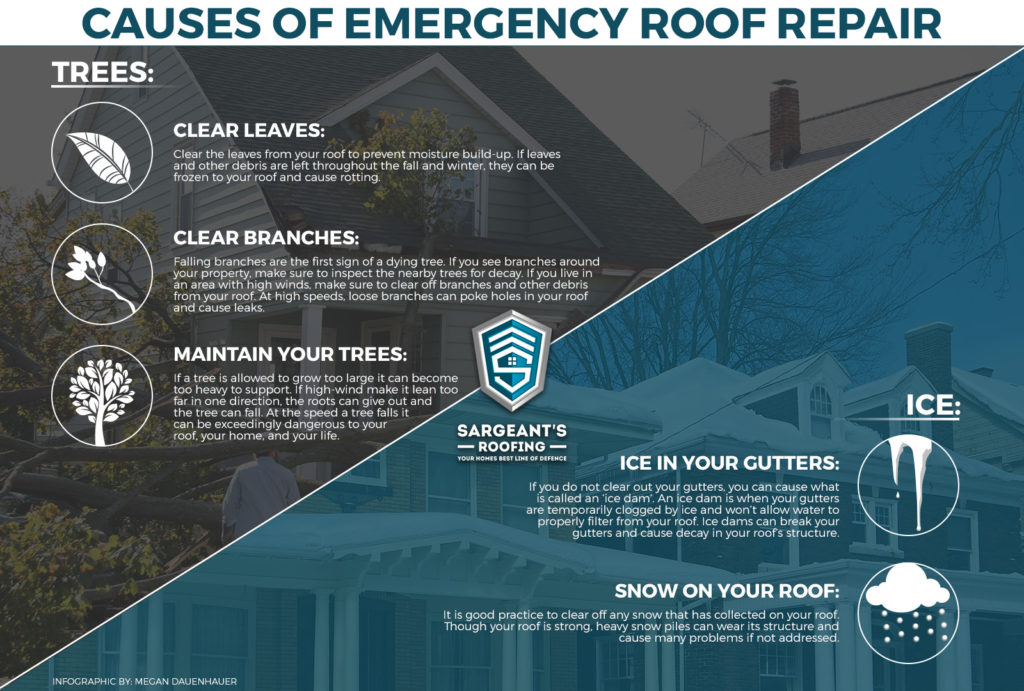When it pertains to roof installations, the climate can make or damage the job. Visualize the irritation of managing materials that won't cooperate as a result of severe warmth or battling slippery surface areas caused by unforeseen rain. Recognizing the effect of climate condition on your roof project is crucial for an effective result. So, let's check out just how different climate aspects can influence the top quality and durability of your roof setup, making certain a task well done.
Effect of Temperature Level on Roof Installment
When it comes to roofing system setup, temperature plays a critical duty at the same time. The suitable temperature level for roofing tasks commonly drops between 45 and 85 degrees Fahrenheit. Extreme heat can cause materials like shingles to come to be too flexible, leading to potential damage throughout installment. On the other hand, chilly temperature levels can make products fragile and vulnerable to breaking. It is essential to schedule roofing installments during modest temperature levels to ensure the best result.
Throughout chillier climate, contractors may need to take additional preventative measures such as utilizing warmed tools or enabling materials to heat up prior to setup.
In contrast, heat may require work to be done previously or later on in the day to stay clear of the peak temperatures. By taking into consideration the temperature and its results on roof covering products, you can assist ensure a successful installment that will endure the aspects for years to find.
Result of Rainfall on Roof Covering Projects
Roofing tasks can be substantially influenced by rainfall, impacting both the timeline and the top quality of the installment. Rainfall or snow can produce slippery problems, making it hazardous for roofing professionals to service a damp surface area. Furthermore, moisture can compromise the adhesion of products like shingles or underlayment, bring about prospective leakages or problems in the future.
If it rains throughout a roofing project, the water can seep right into prone areas, causing delays as the setup staff should await the roof covering to dry prior to proceeding. please click the up coming website page can also advertise the development of mold and mildew and mold, further threatening the stability of the roofing system.
To avoid these concerns, it's advised to arrange roofing projects throughout drier periods or keep track of the weather forecast very closely to plan around any type of prospective rainstorms. By taking safety measures to operate in desirable weather conditions, you can make sure a smoother and more successful roof installment procedure.
Influence of Wind Rate on Installation Success
Throughout roofing installment, the speed of the wind plays an essential duty in figuring out the success of the project. High wind speeds can present significant challenges to contractors, potentially resulting in safety and security threats and high quality issues. When wind speeds exceed recommended restrictions, it comes to be hard to manage products, raising the danger of accidents and damage to the roof covering products. Strong gusts can additionally impact the accuracy of dimensions and the precision required for correct installment.
To make certain an effective roof installation, it's necessary to keep track of and consider wind rates. Preferably, roof covering installment need to take place on days with low to modest wind rates. https://roofrepairsemergency39406.blogadvize.com/39651153/how-commonly-is-it-advisable-to-have-your-roof-covering-examined boosts the security of the employees yet also enhances the general high quality of the installation.
Roofing projects scheduled throughout tranquil weather are more likely to be completed effectively and with fewer errors. By taking note of wind rate projections and preparing accordingly, you can aid ensure a smooth and effective roof installation procedure.
Conclusion
So, when it comes to roof covering installation, remember to think about the weather conditions to make sure a successful work. Optimal temperature levels, completely dry problems, and moderate wind rates are essential elements to focus on for a smooth installment process. By arranging your task throughout the most effective periods and suitable weather conditions, you can achieve a resilient and durable roof covering that will shield your home for several years to come.
